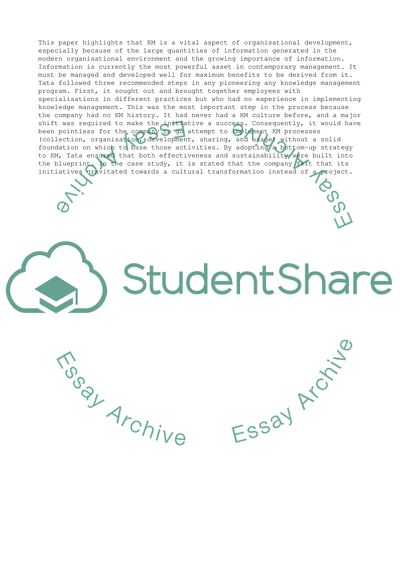Cite this document
(“Knowledge Management at Tata Essay Example | Topics and Well Written Essays - 2000 words”, n.d.)
Knowledge Management at Tata Essay Example | Topics and Well Written Essays - 2000 words. Retrieved from https://studentshare.org/management/1692079-critically-analyse-the-approach-to-knowledge-management-at-tata
Knowledge Management at Tata Essay Example | Topics and Well Written Essays - 2000 words. Retrieved from https://studentshare.org/management/1692079-critically-analyse-the-approach-to-knowledge-management-at-tata
(Knowledge Management at Tata Essay Example | Topics and Well Written Essays - 2000 Words)
Knowledge Management at Tata Essay Example | Topics and Well Written Essays - 2000 Words. https://studentshare.org/management/1692079-critically-analyse-the-approach-to-knowledge-management-at-tata.
Knowledge Management at Tata Essay Example | Topics and Well Written Essays - 2000 Words. https://studentshare.org/management/1692079-critically-analyse-the-approach-to-knowledge-management-at-tata.
“Knowledge Management at Tata Essay Example | Topics and Well Written Essays - 2000 Words”, n.d. https://studentshare.org/management/1692079-critically-analyse-the-approach-to-knowledge-management-at-tata.


